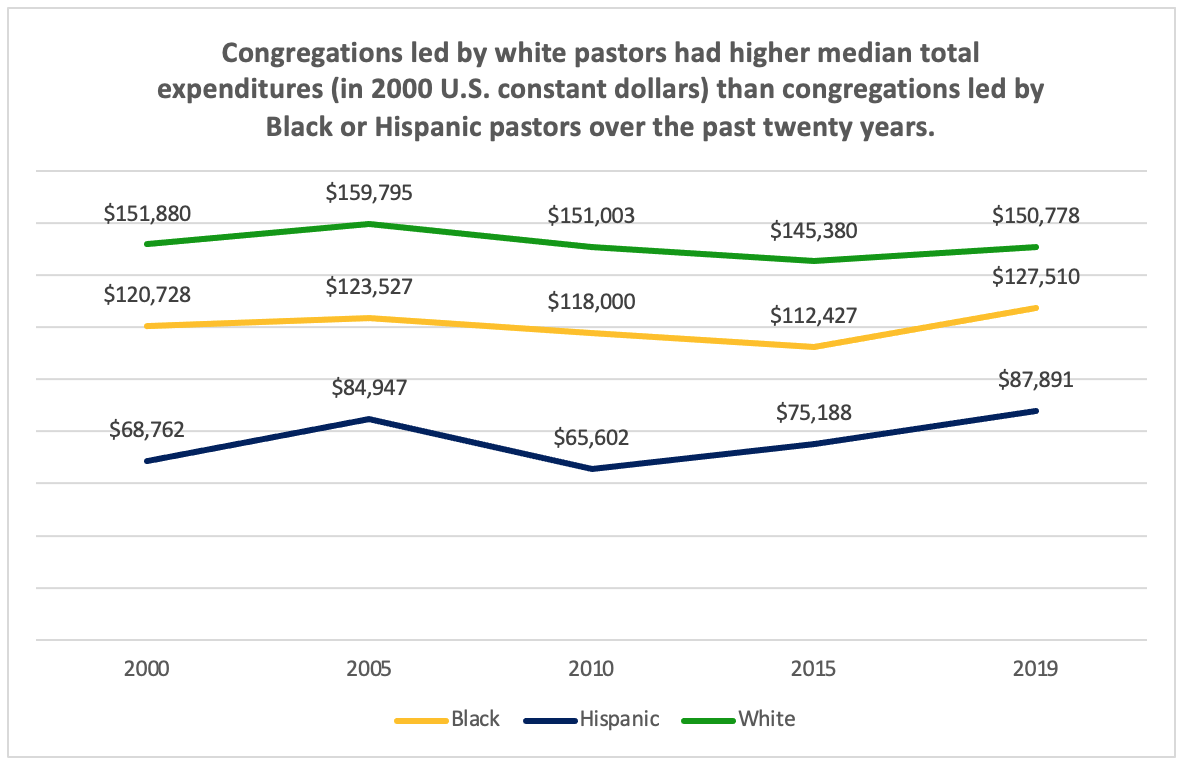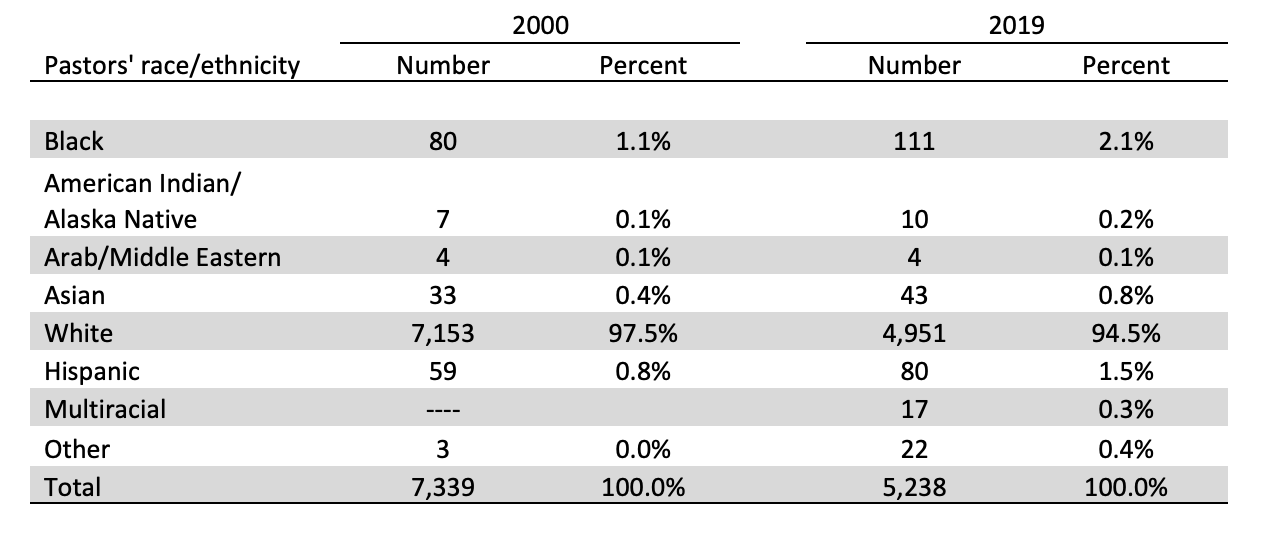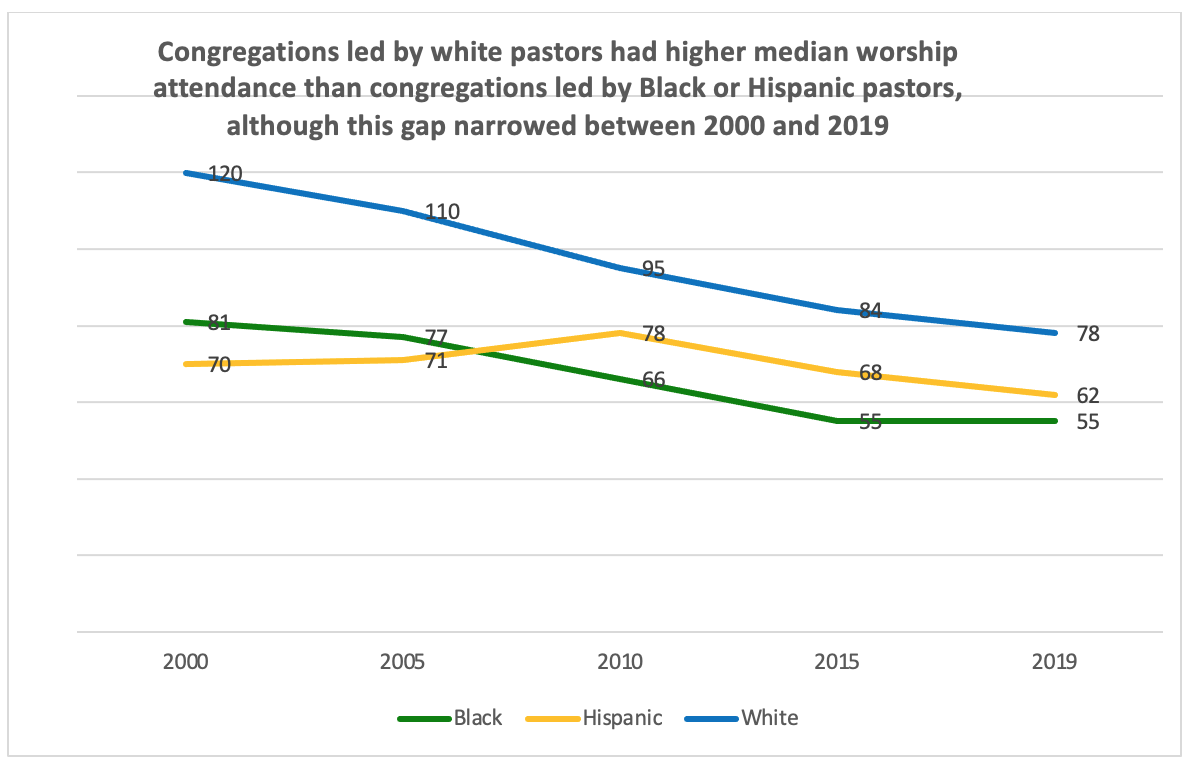The Evangelical Lutheran Church in America has had goals and policies in its churchwide office and synods since the late 1980s to increase racial and ethnic diversity. When the American Lutheran Church and the Lutheran Church of America merged to form the ELCA in 1988, the leaders of the new denomination set a Constitutional goal of having 10 percent of the denomination’s membership comprised of racial and ethnic minorities or people who spoke a language other than English as their first language1. The Constitution, Bylaws, and Continuing Resolution also set in place a quota system in which 10 percent of all national and synodical positions were to be reserved for racial and ethnic minorities.
Even though the ELCA has had quotas for minority leadership in churchwide and synodical positions, historically there have been no quotas reserved for minority lead pastors. So how have lead pastors who belong to racial and ethnic minority groups been faring over the past two decades? To find out, we analyzed data on ELCA congregations and their lead clergy for the period of 2000 to 20192. Here are some of our key findings:
1. The ELCA has seen some increase in clergy of color over the past twenty years, although the majority of senior or solo pastors are white.
Table 1. Percentage of lead pastors comprised of each racial or ethnic group in 2000 and 2019
- Nearly all ELCA lead pastors (98%) in 2000 were white, and by 2019 about 95% of congregations were led by a white pastor.
- Altogether, racial and ethnic minority pastors made up only 5 percent of all lead pastors by 2019.
- Blacks comprised only one percent (or 80 individuals) of all lead pastors in 2000, and by 2019 they made up only two percent (or less than 120) of lead pastors.
- Hispanics comprised less than one percent of pastors in 2000, and two decades later they made up little more than one percent of lead pastors.
- Less than one percent of lead pastors were made up of Asian/Pacific Islanders throughout the period covered by our study3.
2. Disparities continue in terms of size of congregations led by pastors of different races and ethnicities, although all congregations shrank in terms of median worship attendance.
- White pastors served larger congregations (in terms of median worship attendance) than congregations served by Black or Hispanic pastors throughout the period of 2000 to 2019. However, this gap narrowed during this period, primarily because the median worship attendance of congregations led by white pastors declined at a faster rate than the decline in worship attendance of congregations led by Black or Hispanic pastors.
- From 2000 to 2019, congregations led by Hispanic pastors experienced a net decline in worship attendance of 11 percent, while Black-led and white-led congregations experienced a decline in worship attendance of over 30 percent.
- Congregations led by Hispanic clergy made the greatest gains in reaching parity with white-led congregations. In 2000, congregations led by Hispanic pastors had a median worship attendance that was less than 60 percent of the worship attendance of white-led congregations. By 2019, congregations led by Hispanics were a little less than 90 percent of the size of white-led congregations.
- In 2000, congregations led by Black pastors were two-thirds the size of congregations led by white pastors in terms of median worship attendance. By 2019, the worship attendance of Black-led congregations was a little more than 70 percent of white-led congregations’ attendance.
3. White pastors led congregations with the greatest financial resources and Hispanic pastors led congregations with the least amount of financial resources throughout the period of 2000 to 2019.

- In 2000, total expenditures of congregations led by Hispanic clergy were less than half (45 percent) of expenditures of congregations led by white pastors. Twenty years later, the total expenditures of congregations led by Hispanic pastors were still less than 60 percent of the expenditures of congregations led by white pastors, despite the fact that the worship attendance of Hispanic-led congregations was 90 percent of the worship attendance of white-led congregations.
- In 2000, the expenditures of Black-led congregations were a little less than 80 percent of total expenditures of white-led congregations. By 2019, the median expenditures of Black-led congregations were 85 percent of those of white-led congregations.
- Overall, the congregations led by Hispanic pastors experienced a 28 percent net increase in total expenditures from 2000 to 2019 (after accounting for inflation), despite the fact that they continued to have fewer financial resources than congregations led by Black or white pastors.
How can the ELCA promote greater equity in terms of the types of congregations to which racial and ethnic minorities receive calls as pastors? This is an important issue because the financial resources of congregations can impact the salary and benefits that they can offer to pastors. The salaries that pastors receive can then impact their financial security and economic well-being, and whether they can continue serving in pastoral roles or must seek employment outside pastoral ministry.
1 Mark Granquist, “North American Lutheranism and the New Ethnics,” in Lutherans Today: American Lutheran Identity in the 21st Century, ed. by Richard Cimino (Grand Rapids, MI: William B. Eerdmans Publishing, 2003), 180- 184; “How Strategic and Authentic Is Our Diversity: A Call for Confession, Reflection, and Healing Action.” As adopted by more than a two-thirds vote (855-13) by the 15th triennial Churchwide Assembly on August 9, 2019, in Milwaukee, Wisconsin, p. 7.
2 Denominational data have been generously provided to us by the Evangelical Lutheran Church in America Office of Planning, Research and Evaluation.
3 Because there are so few pastors who identified as American Indian/Alaska Native, Arab/Middle Eastern, Multiracial, or Other throughout the study period, we drop these groups from subsequent analyses.









